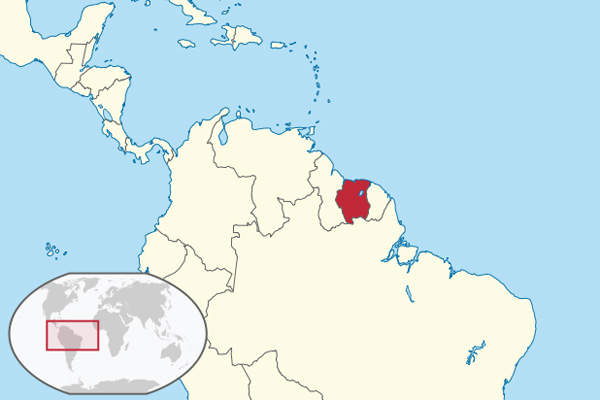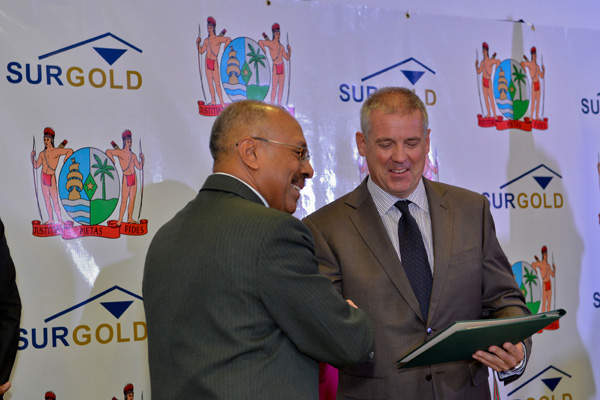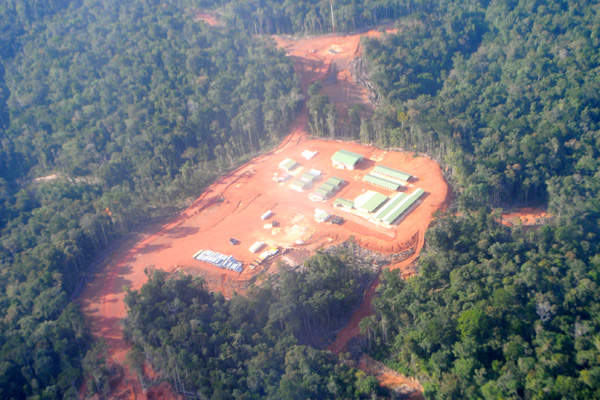Suriname Gold Company (Surgold), a wholly owned subsidiary of Newmont Mining Corporation, developed the Merian gold mine approximately 66km south of Moengo and 30km north of the Nassau Mountains in Suriname.
Suriname’s Ministry of Natural Resources granted environmental approval for the gold project in December 2013. Construction started in August 2014 and commercial production was achieved in October 2016. The Suriname Government executed the option to acquire a 25% equity in the gold project in November 2013.
The Merian open-pit is expected to produce up to 500,000oz of gold per annum over its estimated mine life of 11 years. In addition, the project employs approximately 1,100 personnel.
Merian gold mine geology and reserves
The Merian gold mine is located within the Guiana Shield, which comprises of distinct, east-west trending belts of low-grade metamorphic rocks separated by large areas of granitic rocks and gneisses. The bedrock geology of the mine consists of inter-bedded graywackes, mudstones, siltstones, sandstones and minor volcaniclastics of the north-west trending and south-east plunging Armina Formation.
Gold mineralisation at Merian occurs within saprolite, saprock or un-oxidized rock. The saprolite zone, comprised of sedimentary rocks oxidised to a mixture of clays such as kaolinite and iron oxides, extends up to a depth of 100m below surface and above a transition zone comprised of partially-weathered rocks.
The Merian open pit mine was estimated to contain 5.1 million ounces (Moz) of gold reserves as of December 2015.
Mining and processing of ore from the Merian gold mine
Conventional truck and shovel operation along with drill and blast methods are employed at the open-pit mine. The major mining fleet for the project includes Hitachi EX3600 hydraulic excavators, Caterpillar 785D haul trucks, blast hole drills, motor graders, CAT D10T dozers, and other ancillary equipment.
Fresh rock from the mine is crushed at the mine site while the saprolitic rock is directly screened before being transported to the processing plant. A blend of saprolite and fresh rock is processed at the plant. The milling capacity of the plant is eight million tonnes per annum (Mtpa).
The crushed ore passes through a grinding circuit comprising a semi-autogenous (SAG) mill, a pebble-crusher and a ball mill. Fine ore particles are delivered to a trash screen and thickened prior to leaching, whereas the coarser material is re-circulated through the grinding circuit. Coarse gold is recovered from the grinding circuit through a gravity concentrator and sent directly to the refinery.
Cyanide and lime are mixed to the ore slurry for dissolving the gold into the solution. The slurry is then transferred from the leaching circuit to the carbon in pulp (CIP) where it is mixed with activated carbon to adsorb gold. Slurry then goes to the tailings processing facility and the carbon is delivered to the elution circuit where gold is recovered using electrowinning process.
Tailings produced from the plant are treated using a combination of tailings washing and thickening and an air/sulphur dioxide (air/SO2) cyanide detoxification system before disposal.
Construction and infrastructure
Major construction works include the development of borrow pits, construction of a process plant, a tailings storage facility, and a 700m-long airstrip to be used for the export of gold and personnel transport during health and safety emergencies.
Power supply for the gold mine is provided by a 62.3MW on-site heavy fuel oil (HFO) power plant. A small diesel power plant is also used to supply power during the pre-production phase. It is also used as a back-up during emergency in the operational phase.







